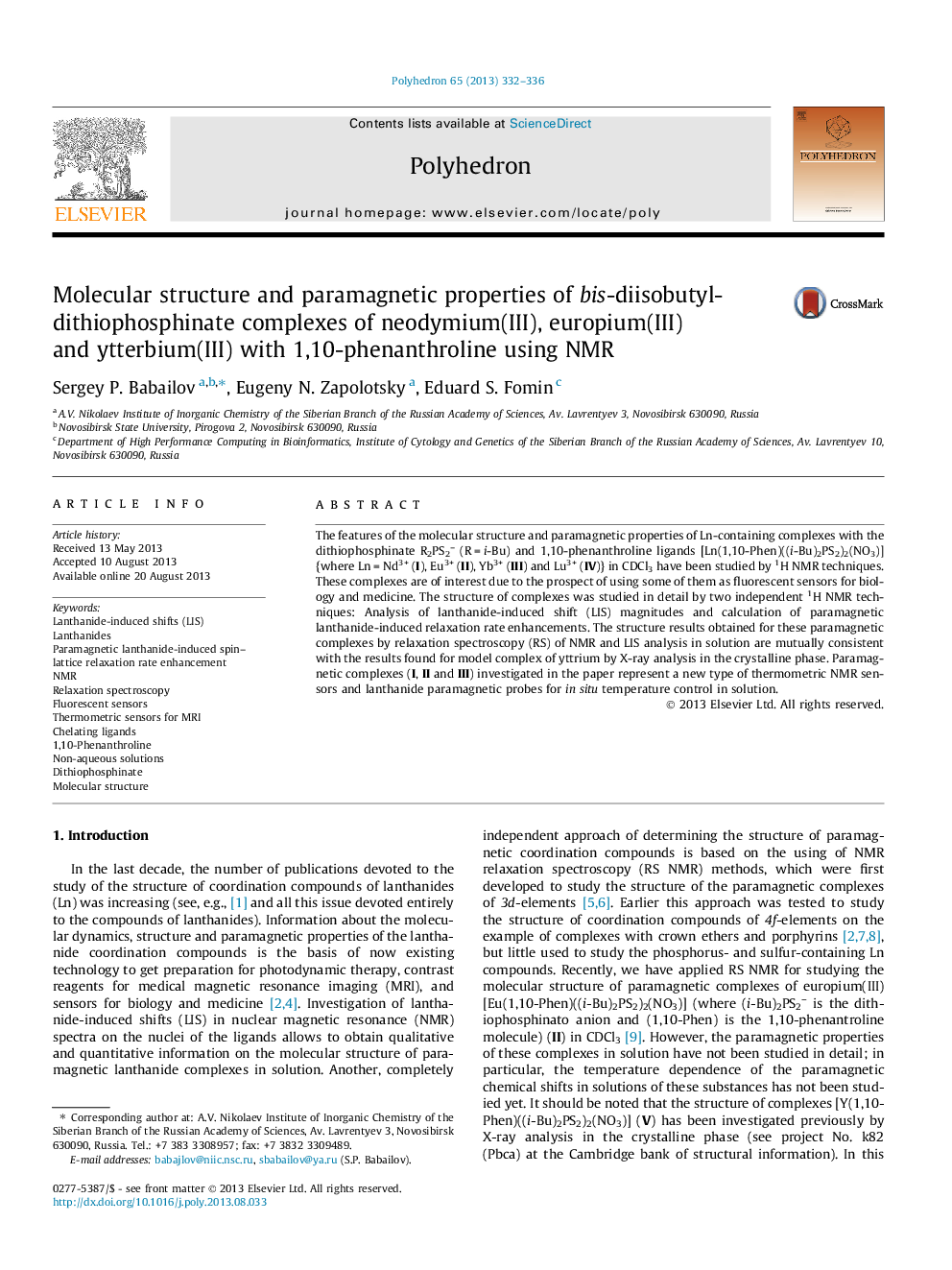| Article ID | Journal | Published Year | Pages | File Type |
|---|---|---|---|---|
| 1336804 | Polyhedron | 2013 | 5 Pages |
The features of the molecular structure and paramagnetic properties of Ln-containing complexes with the dithiophosphinate R2PS2– (R = i-Bu) and 1,10-phenanthroline ligands [Ln(1,10-Phen)((i-Bu)2PS2)2(NO3)] {where Ln = Nd3+ (I), Eu3+ (II), Yb3+ (III) and Lu3+ (IV)} in CDCl3 have been studied by 1H NMR techniques. These complexes are of interest due to the prospect of using some of them as fluorescent sensors for biology and medicine. The structure of complexes was studied in detail by two independent 1H NMR techniques: Analysis of lanthanide-induced shift (LIS) magnitudes and calculation of paramagnetic lanthanide-induced relaxation rate enhancements. The structure results obtained for these paramagnetic complexes by relaxation spectroscopy (RS) of NMR and LIS analysis in solution are mutually consistent with the results found for model complex of yttrium by X-ray analysis in the crystalline phase. Paramagnetic complexes (I, II and III) investigated in the paper represent a new type of thermometric NMR sensors and lanthanide paramagnetic probes for in situ temperature control in solution.
Graphical abstractThe molecular structure and NMR thermosensor properties of Ln-containing complexes with the dithiophosphinate and 1,10-phenanthroline ligands {where Ln = Nd3+, Eu3+, Yb3+ and Lu3+} in CDCl3 have been studied by 1H NMR techniques.Coordination compound investigated in the paper represents new type of thermometric NMR sensors.Figure optionsDownload full-size imageDownload as PowerPoint slide
